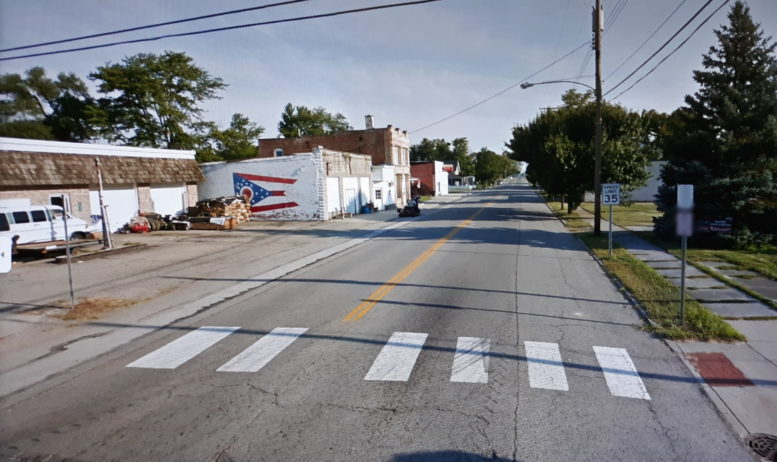By JAN LARSON McLAUGHLIN
BG Independent News
The 2020 U.S. Census showed some serious shrinkage in populations of small towns over the past 10 years. The trend was visible throughout Wood County, where the majority of villages saw their populations dip in the latest head count.
Of the 21 villages in the county, only three gained population in the last decade. The rest saw their numbers slip – though some by just a handful of residents.
The biggest change was in Hoytville, in the southwest corner of the county, where the population dropped 27.4% from 303 to 220 residents.
The three villages that experienced growth were Haskins, Tontogany and Jerry City.
Wood County Planning Commission Director Dave Steiner and Planner Jamie Stanley were not surprised by the trend.
The lack of well-paying jobs and amenities in towns have led to the small but steady loss of people wanting to move to tiny communities or stay there for a lifetime.
“There’s no industry. They are bedroom communities,” Steiner said.
“Families with kids seem to want to be in the suburban areas,” Stanley said. “The villages don’t have that same draw.”
Small towns don’t have the restaurants and retail opportunities that more populated municipalities boast.
“They are farther from the amenities that people want,” Steiner said of small villages.

The U.S. Census Bureau has not released the ages of respondents yet, but Steiner expects the smaller villages to have a greater share of older residents.
“I suspect you’re going to see that villages are older,” he said.
The age data will help local governments prepare for serving their residents.
“That helps you recognize upcoming needs,” Stanley said.
“I’ll be interested to see if we’re retaining younger people or if they’re leaving,” Steiner said.
And is “brain drain” still a trend – “Are those educated here staying here?” Stanley said.
Despite the shrinking populations, most local small towns work hard to provide services to residents.
“The villages of Wood County seem to do a good job of maintaining what they’ve got,” in terms of public utilities and community services, Steiner said.
What they lack in tax revenues, many small towns make up for in personality. Residents of many villages have a strong sense of community – and are just fine not seeing growth.
“There’s a lot of pride in their communities,” Stanley said. “They own who they are.”
Following is a list of the population changes in Wood County’s 21 villages:
- Bairdstown – dropped 11.5% from 130 to 115 residents.
- Bloomdale – dropped 1.9% from 678 to 665 residents.
- Bradner – dropped 1.4% from 985 to 971 residents.
- Custar – dropped 0.6% from 179 to 178 residents.
- Cygnet – dropped 9% from 597 to 543 residents.
- Grand Rapids – dropped 4.1% from 965 to 925 residents.
- Haskins – grew 4.8% from 1,188 to 1,245 residents.
- Hoytville – dropped 27.4% from 303 to 220 residents.
- Jerry City – grew 6.3% from 427 to 454 residents.
- Luckey – dropped 0.3% from 1,021 to 1,009 residents.
- Millbury – dropped 0.6% from 1,200 to 1,193 residents.
- Milton Center – dropped 4.9% from 144 to 137 residents.
- North Baltimore – dropped 1.8% from 3,432 to 3,369 residents.
- Pemberville – dropped 3.3% from 1,371 to 1,326 residents.
- Portage – dropped 9.1% from 438 to 398 residents.
- Risingsun – dropped 10.7% from 606 to 541 residents.
- Tontogany – grew 5.4% from 367 to 387 residents.
- Walbridge – dropped 0.3% from 3,019 to 3,011 residents.
- Wayne – dropped 5.2% from 887 to 841 residents.
- West Millgrove – dropped 24.7% from 174 to 131 residents.
- Weston – dropped 8.5% from 1,590 to 1,455 residents.
Though the census no longer collects information on income levels, that data is being compiled by the American Community Survey, a program conducted by the U.S. Census Bureau.
Steiner is interested in seeing those numbers since that data can help his office aid local towns in securing community block grants for infrastructure such as waterlines, sanitary sewers, streets, and ADA accessibility.
“That’s what I’m waiting on,” he said.
The income level data will also help the county planning commission office target its Community Housing Impact Program.

